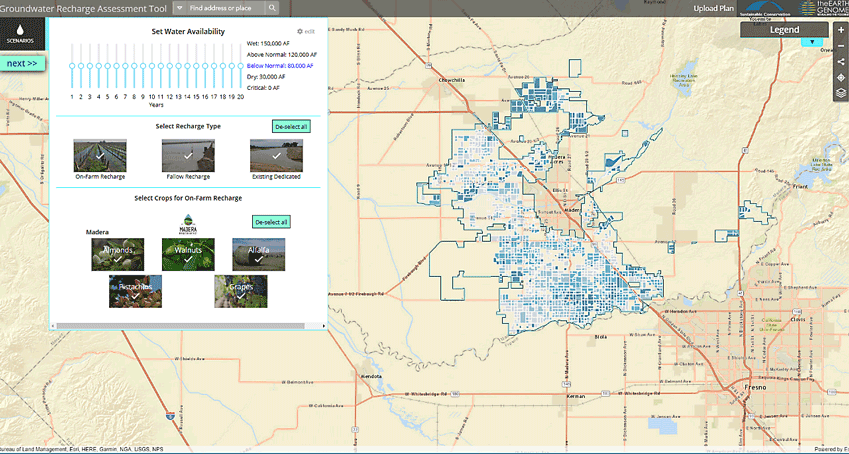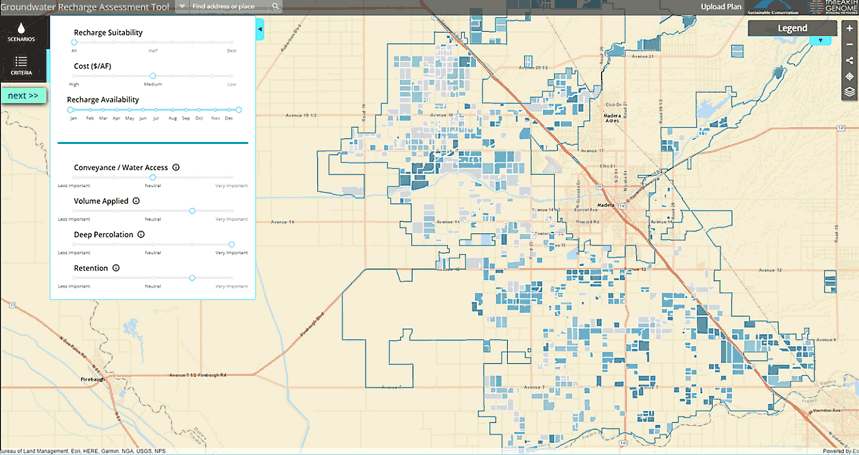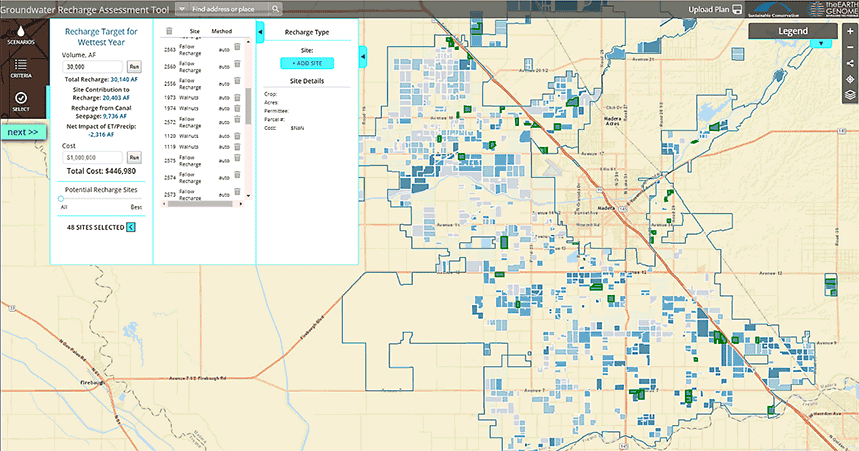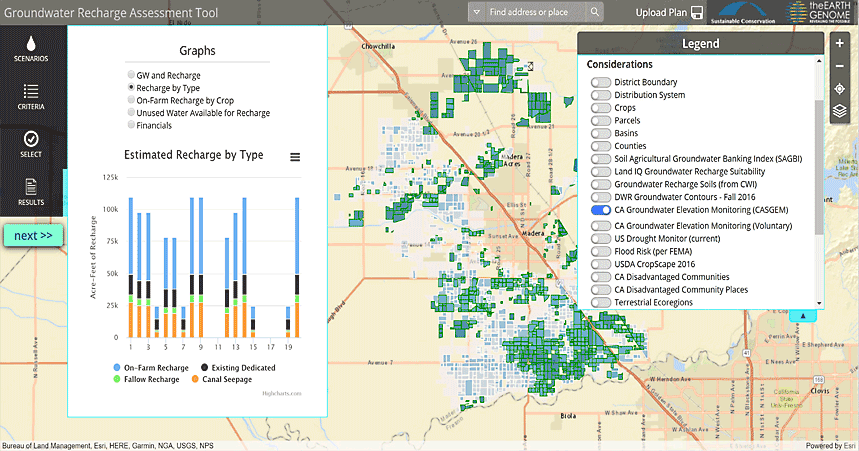Achieving Groundwater Sustainability is Hard
GRAT makes it easier
GRAT — the Groundwater Recharge Assessment Tool — gives California’s Groundwater Sustainability Agencies (GSAs) the essential insights they need to optimize their potential for groundwater recharge.
Insights from GRAT output enable GSAs to more efficiently create Groundwater Sustainability Plans (GSPs) for quick adoption and successful financing and implementation.
GRAT is the product of a partnership between Sustainable Conservation and The Earth Genome, which offer a suite of services to help you take full advantage of GRAT’s power.

Optimize your GSP
Put your data and science to work with GRAT
GSAs face similar challenges in developing their GSPs — answering questions such as:
- Where and when is recharge best done?
- How much surface water can we capture?
- How much of our groundwater overdraft can be addressed by increasing recharge?
GRAT is designed to help. It quickly tells you:
- Where your most cost-effective on-farm recharge options are
- When those options exist by week over a 20-year horizon with multiple rain-year types
- How much water might be recharged by these options
- Environmental and social implications of recharge options in your basin
GRAT allows you to identify and prioritize the most cost-effective on-farm recharge projects and operations, providing you with project reconnaissance and feasibility insights across unlimited scenarios.
It also provides you with easily understood results from those studies — enabling you to engage diverse stakeholders in planning for your GSP’s adoption, financing, and implementation.
“TID sees GRAT as an integral tool to employ with Groundwater Sustainability Planning to identify project and management actions. We will also use it on a real-time basis in future years to direct surplus flows for optimum recharge.”Paul Hendrix, Tulare Irrigation District General Manager
How Does GRAT Work?
GRAT was developed by Sustainable Conservation and The Earth Genome in conjunction with irrigation districts, growers and agronomists. It integrates hydrologic, agronomic and geologic science with the best available data from local, state and federal sources.




Our Suite of GRAT Partnership Services
Sustainable Conservation and Earth Genome, both non-profit organizations, developed GRAT with the support of local agency and foundation funding.
Sustainable Conservation has been working with farmers and irrigation districts since 2011 on affordable, practical ways to capture floodwater on farmland.
We are seeking new partnerships with GSAs — partnerships that will allow them to apply GRAT in their local areas and ensure they can successfully evaluate options for achieving Sustainable Groundwater Management Act (SGMA) goals.
Our services to partners include:
- Localization Setting up GRAT for your GSA
- Data Processing your data, uploading into GRAT, and updating files
- Defaults WAFR scenario creation support and setting tool defaults
- Reporting Minor customization of graphs/results on request
- Training and Support In-person tool user training and support (initial and ongoing)
- GSP support Coordinating GRAT with your consultants
- Grant support Support for Prop 1 funding grant application
We anticipate a timeline of 2-4 months needed to set up new GSAs on GRAT, depending on GSA data availability.
We are also committed to continued end-user engagement and are reaching out to GSAs and their members to form a GRAT user community that will help identify further functionality that would be valuable for GSAs.
Request a GRAT Demo
or More Information
Click to Email Us
Or call 415.977.0380 ext 312
or email [email protected]
